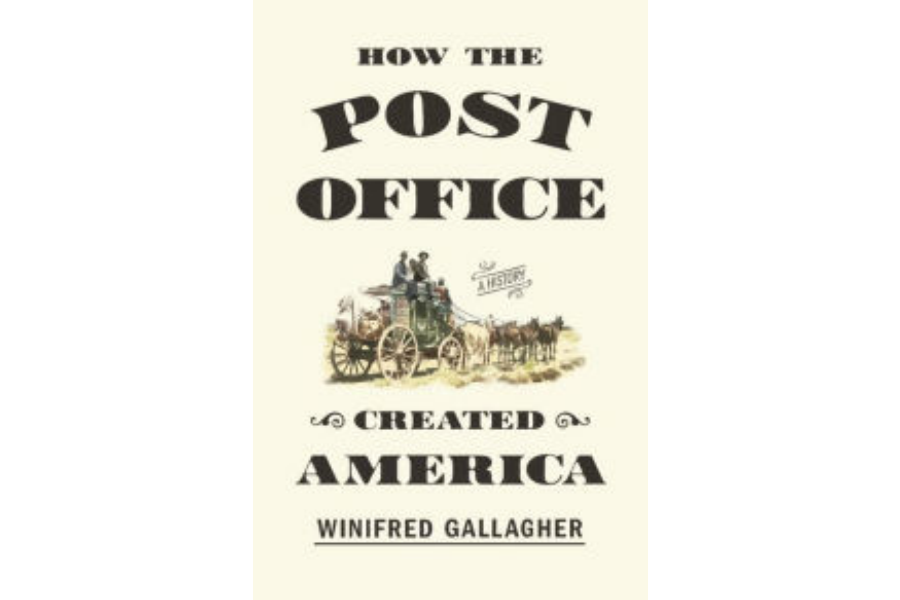'How the Post Office Created America' is a love letter to an institution in peril
When Alexis de Tocqueville toured the United States in the 1830s, he was impressed by many aspects of the fledgling country, but one institution in particular stood out to him. He was astonished by the scale of the country’s postal system, which was already the most expansive in the world. He noted that even in the deepest forests of Michigan, settlers could receive mail from anywhere in the country within one week.
In her new book How the Post Office Created America, journalist Winifred Gallagher argues that de Tocqueville was right to view this institution with amazement. Gallagher argues that far from merely existing as an important part of American society, the post office actually shaped American history and did much to create the United States that we know today. What emerges is a fascinating portrait of communications and transportation history in the United States, as well as a poignant love letter to an institution that, not for the first time in its history, is teetering on the edge of peril.
Much of Gallagher’s narrative concerns the post office’s role in shaping well known events in American history. For example, in the early 18th century, the American colonies were basically 13 isolated entities. But after the establishment of a postal service, new post roads and mail routes connected the Eastern Seaboard both geographically and intellectually. Soon, the colonies were bound together by a common culture and identity, which helped lead to the American Revolution. Gallagher also argues that the post office contributed greatly to settlement of the frontier. Once the institution expanded West, settlers were much more likely to venture off into terra incognita, since they knew they would be able to receive letters from loved ones back East.
Besides the post office’s role in the creation of America, it also helped build the character of the United States and its spirit in countless other ways. The post office’s commitment to cheap newspaper delivery contributed to the education of the young nation, to the point where a South Carolina congressman said in 1891 that the post had become a great university for all Americans.
It subsidized the nation’s road network, rail network, and eventually aviation industry. It created a social institution for many Americans, with post offices in rural areas acting as gathering places and community hubs. It led to crazes for stamp-collecting, autographs, good penmanship, and greeting cards. Of course, the post office also showcased some of the darker components of America’s past, as Gallagher shows in the sections of the book that discuss the struggles of women to serve in the postal service in equal numbers to men and the ban on African Americans serving as carriers before the Civil War, based on fears that they would educate themselves and realize that they deserved freedom.
As she takes us on a breakneck tour of more than two centuries of American history, Gallagher never misses a chance to sprinkle in factoids, characters and anecdotes, all of which bring color and life to her portrait of the post office. She tells us about Polly Martin, a 19th-century postmaster who horsewhipped a brigand who was trying to climb onto her mail wagon. She describes the short but illustrious history of the Pony Express, where riders survived on wolf mutton and boiled wheat during their hectic races across the country. She describes the first mail carried by air – in a hot air balloon in 1856 – and the trials of early airplane pilots, including Charles Lindbergh, who carried letters through the skies. She charts one postmaster general’s plan to deliver mail by rocket.
But despite all of these colorful anecdotes, Gallagher’s book is far more than just a diverting history; instead, it’s a call to action. America’s postal service has changed dramatically over the past five decades; in 1970, the Postal Reorganization Act turned the Post Office Department into a public-private partnership, the United States Postal Service that we know today.
Already hobbled by outdated facilities and machinery, the new USPS immediately bumped up against new trials: competition created by the digital revolution and other budgetary problems caused by restructuring of its employees’ retirement plans and an inactive Congress. Gallagher argues that while the post may be in trouble, it’s still a vital part of American society. She explores the ways that the USPS could forge forward and craft a new identity, perhaps by offering safe, secure and cheap online banking and digital communications tools, a move that would dovetail with the institution’s long history of symbiosis with America’s communications revolutions.
Gallagher implores her readers to celebrate the post office for the role it has played in shaping American history, and to reflect on how the post can serve the country and its people in the years to come.






